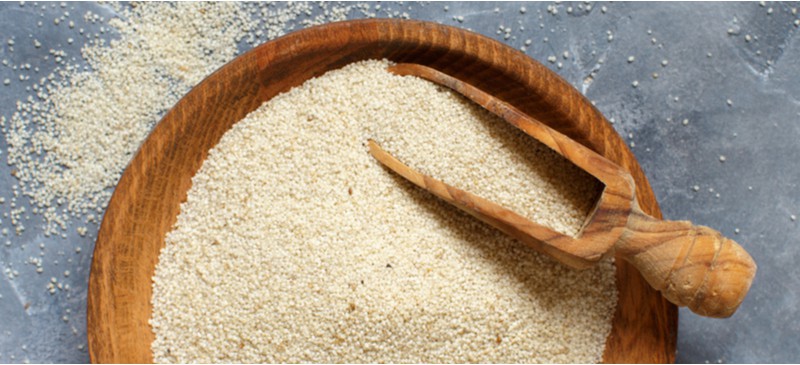This Dr. Axe content is medically reviewed or fact checked to ensure factually accurate information.
With strict editorial sourcing guidelines, we only link to academic research institutions, reputable media sites and, when research is available, medically peer-reviewed studies. Note that the numbers in parentheses (1, 2, etc.) are clickable links to these studies.
The information in our articles is NOT intended to replace a one-on-one relationship with a qualified health care professional and is not intended as medical advice.
This article is based on scientific evidence, written by experts and fact checked by our trained editorial staff. Note that the numbers in parentheses (1, 2, etc.) are clickable links to medically peer-reviewed studies.
Our team includes licensed nutritionists and dietitians, certified health education specialists, as well as certified strength and conditioning specialists, personal trainers and corrective exercise specialists. Our team aims to be not only thorough with its research, but also objective and unbiased.
The information in our articles is NOT intended to replace a one-on-one relationship with a qualified health care professional and is not intended as medical advice.
Fonio: The Ancient Super Grain & How It Compares to Quinoa
September 20, 2020

While you may not yet be familiar with this whole grain, according to the Aduna website, fonio “has been predicted to be one of the hottest food trends of 2020 by Whole Foods and The Times.” Not only that, but it’s believed to be one of the oldest African cereal grains in existence, having been consumed for 5,000+ years in West African countries such as Nigeria, Guinea and Burkina Faso.
What are the health benefits of fonio? It’s a relatively good source of plant-based protein, providing six grams per half-cup serving, plus it’s a naturally gluten-free grain and rich in iron, zinc, B vitamins, phosphorus, magnesium and more.
What Is Fonio?
Fonio is a type of cereal grain that has provided nutrition for millions of people living in West Africa for thousands of years. While it has traditionally been consumed most in Senegal, today it’s mostly eaten in countries like Ghana, Mali, Burkina Faso, Guinea and Nigeria.
It goes by many names depending on the country/language, including:
- acha
- acca
- hungry rice
- hungry millet
- afio
- pini
- fundi millet
- hungry koos
- and others
It’s one of two types of millet (in the Panicoideae family), which is a fast-growing cereal plant that thrives easily in warm countries and in regions with poor soils.
There are three main types of fonio grain: white, black and raishan varieties. White fonio is the most popular type and usually the easiest to find.
Is fonio a whole grain? Yes, which is why it’s a good source of fiber, vitamins, minerals ,and even protein and anti-inflammatory compounds.
What does fonio taste like? Its taste is described as a “cross between couscous and quinoa.” Like other whole grains, it has a mild nutty aroma.
Its texture is similar to teff or millet, since it’s small and pebble-like in size.
Health Benefits
1. Good Source of Protein and Amino Acids
Fonio can make great additions to a variety of diets, especially vegan/plant-based diets, since it contains a number of essential amino acids. It’s especially high in methionine, cystine, valine, leucine and isoleucine.
Research shows that fonio is higher in amino acids, such as methionine and cystine (sulfur-containing amino acids), than grains including wheat, rice, maize, sorghum, barley and rye. These and others can contribute to benefits including healthy muscle function, exercise recovery, bone health, detoxification, skin health and a healthy metabolism.
Sulfur-containing amino acids are particularly beneficial for supporting a normal metabolism and growth, as well as healthy liver function.
Overall, fonio contains two to three times as much protein and fiber as brown rice.
2. High in Iron and Essential Nutrients
Another noteworthy fonio nutrition benefit is its supply of nutrients, including iron, zinc and phosphorus. These are important for facilitating cognitive function, bone health, high energy levels and many other functions.
Additionally, it contains some calcium, magnesium, potassium, manganese and folate.
The high iron content of fonio, and also zinc, makes it particularly suitable for people following a vegan diet, since the diet can increase the risk for low iron intake and anemia since many iron-rich foods such as meat are avoided.
Iron is needed to support oxygen transport within the body, while zinc helps support the immune system, defends against oxidative stress, and promotes healthy blood clotting, skin health, thyroid function and more. To absorb the most iron possible from this grain, pair it with sources of vitamin C, such as berries, bell peppers or leafy greens.
3. Good Source of B Vitamins
Within fonio you’ll also find B vitamins, including thiamine, riboflavin, folate and niacin, which help support the conversion of nutrients into useable energy, support glucose metabolism, and play a key role in healthy muscle, nerve, heart and brain functions.
4. Low Glycemic Index Score
Is fonio low-carb? Because it’s high in protein and has more fiber than refined grains, it’s a low glycemic index (GI) grain, however it does still contain carbohydrates and isn’t quite “low carb.” That said, studies have found it has a lower GI score than certain grains, such as brown rice, meaning it’s a good choice for people watching their blood sugar levels.
In fact, in certain African countries health care providers have traditionally recommended fonio for diabetics/those with insulin resistance because it can help support metabolic health.
White whole fonio is the type with the highest amount of fiber, which also contributes to its generally low calorie content.
5. Gluten-Free
Fonio is a good grain choice for people following a gluten-free diet (such as those with celiac disease or gluten intolerance) because it’s naturally free of gluten protein and unrelated to wheat/barley/rye.
Fonio Nutrition Facts
1/4 cup of uncooked fonio (about 1/2 cup cooked) contains about:
- 160 to 170 calories
- 37 to 29 grams carbohydrates
- 2 to 3 grams protein
- 0 to 1 grams fat
- 1 to 2 grams fiber
- 1.7 milligrams iron (10 percent DV)
The Guardian recently noted that fonio could be the “the grain that would defeat quinoa as king among foodies.” How do the two compare?
They have a similar amount of calories and are both good sources of protein, B vitamins, iron, potassium, calcium, phosphorus and other nutrients. They can be used in many of the same ways and are both gluten-free, so feel free to swap one for the other.
One advantage that fonio has over many other grains is that it’s prized by local communities and enjoyed regionally in West Africa because it’s “well adapted to hot, dry climates and poor soils, and thus is able to grow in areas where many other cereals are not suited.” It can thrive in dry, sandy soils at high altitudes where grains like rice do not grow well.
It also matures faster than most cereal grains, ready to harvest within six to eight weeks after being planted.
Recipes/How to Use
The great thing about this grain is that it’s super fast and easy to cook, ready in just three minutes when combined with boiling water — plus it’s sustainable to grow and inexpensive. Growing this grain even helps provide income to women farmers in the African Sahel and restore degraded soils in regions where farming is difficult.
- To make fonio, cook about 1/4 cup of dried grains with 1 cup of water (a 4:1 ratio of water to dry grains).
- Cook for about 3 to 5 minutes in a pot on the stovetop, stirring constantly until it fluffs up like bulgur or couscous.
- (Optional) you can also add a tablespoon of oil and teaspoon of salt to make it less sticky ad to improve the taste.
The best place to buy fonio is in ethnic markets specializing in African cuisine, health food stores or online.
Try fonio as a substitute for other whole grains, such as brown rice, quinoa, teff, millet or polenta/cornmeal. It works well in dishes such as:
- fried rices
- rice pilafs
- stir-fries
- stews
- soups
- salads
- sweet porridges
- grain bowls
- tabbouleh (as a sub for bulgar)
A traditional use of this grain has been in sweet breakfast porridges, such as when combined with milk. However, the taste works well in savory recipes too.
Keep in mind that when cooking fonio it will double in size once prepared.
If you’re new to cooking with this grain, you can get started with these healthy fonio recipes:
- Creamy Fonio Hot Cereal With Dried Fruit
- Fonio Pilaf with turmeric, paprika and other spices
- Fonio Grain Bowl
- Lamb Shoulder with Fonio
Conclusion
- What is fonio? It’s a whole grain related to millet that originated in West African more than 5,000 years ago.
- Fonio nutrition benefits include supplying you with amino acids, iron, zinc, B vitamins, phosphorus and more.
- Fonio vs. quinoa nutrition, which is better? The two whole grains are similar, both being good providers of plant-based protein and essential nutrients.













